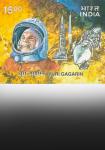After five turbulent years marked by intense competition, price wars and slow growth, a strong revival in demand is driving HLL's performance.
Though in this quarter, topline growth was a notch below the last quarter, strong growth in volumes coupled with systematic increase in prices has aided sales.
Coupled with this, certain cost control measures and higher efficiency in purchases have propelled bottomline growth. Profit margins have expanded despite the company increasing its ad spends. All this is of course good news and the worst clearly seems to be over.
However, the HLL stocks has shed 8 per cent since the results were announced even as the Sensex has gained 5 per cent during the same period possibly due to lingering doubts about what lies ahead.
Though consumer sales are showing buoyant growth across various categories, competition is still keen. The existing brand equity is just not enough to drive sales up any longer.
The pressure to keep increasing ad spends continuously in order to gain, or even maintain, market-share combined with rising cost of key raw materials means growth is possible only at a higher cost.
As long as the demand is strong, HLL may be able clock decent growth though the chances of profit growth outpacing topline growth look thin.
Though HLL has addressed its key structural issues and has a product portfolio that straddles across different price points, the company is still dependent largely on its traditional business for higher sales.
New businesses, for example the food business, are still far from gaining the requisite size to provide impetus to growth in case growth rates in personal care come off.
Currently, the stock is trading at a 26 per cent premium to the average valuation it commanded over the past three years and a 120 per cent premium to its lowest ever multiple. Can these valuations be sustained?
Topline growth is strong
Last quarter performance was driven by strong growth in topline. The calculated price increases also minimised the effect of rising raw material costs and ad spends. The net sales growth in continuing businesses stood at 10 per cent y-o-y.
The FMCG segment which constitutes three-fourths of total revenues and over 90 per cent of profits, grew by 12.1 per cent, less than the preceding quarter, owing to lower growth in personal products and a decline in beverages (see box on category wise growth).
Though the company has managed double-digit growth, analysts are disappointed with the performance as rates have come off from 18.3 per cent in the preceding quarter and pretty much at the same level of growth as an year ago (see chart on quarter-wise sales growth).
"With the step up in brand investment in the recent times and leadership across categories, HLL should have come up with better results, given the fact that overall consumer space is reporting strong growth," says Nikhil Vora, analyst, SSKI in his latest report.
While both volumes and realisations have grown, nearly two-thirds of the growth is attributed to surge in volumes. Obviously, the overall market has shown significant growth.
According to AC Nielsen, the total FMCG market has grown 10.2 per cent q-o-q in the June quarter compared to 3.7 per cent in the same quarter last year. And this growth has been predominantly led by a surge in rural demand that recorded a growth of 13.6 per cent against a meagre 1.9 per cent in June quarter last year.
HLL chairman Harish Manwani says that there is a pick up in the value for money and bottom of the pyramid product segments. He believes that the high government spending in rural areas is propelling rural demand and the scenario is likely to continue.
Analysts agree. "It's too early to say if the demand will slow down, though there could be some deceleration due to the high base effect. Monsoon is still not a negative," says Amnish Agarwal, analyst, Motilal Oswal.
Margins improved too but...
Despite the rise in raw material costs and higher ad spend, the company has been able to manage better margins overall. Operating margins improved by 120 bps, thanks to a combination of price increases and cost efficiencies.
While most product categories showed improvement in margins, ice cream, personal products and soaps segments saw significant expansion.
Foods saw a Rs 42 million profit against a loss of Rs 45 million in the previous corresponding period, while ice creams earnings before interest and tax (EBIT) increased by 115 per cent. Beverages, however, was the laggard, with a 373 bps decline in EBIT margins to 13.5 per cent.
But what really propped up the bottomline was the decline in tax rate. Thanks to a 450 bps decline in tax rate from 22.5 per cent to 18 per cent due to increased outsourcing from units in backward areas, profit after tax increased by 26.2 per cent.
Thus far, analysts were counting on sustained improvement in margins. But cost pressures are likely to prevent margins from expanding or may even depress them further in the second half of the year.
For instance, after the second quarter results, Agarwal has reduced his earnings estimates by 5 per cent and 6 per cent for this calendar year and the next, considering the lower growth rate in personal care, higher ad spends and pressure on cost due to freight, fuel and crude-based raw materials.
Firstly, freight costs that account for 4.5 per cent of net sales are going up due to restrictions on overloading of trucks. Secondly, the rise in crude prices is likely to increase the cost of packaging, which accounts for 8.6 per cent of net sales.
Since consumer products cannot be priced on cost plus, but on the consumer's willingness to pay, the company may or may not be able to pass on these costs through price increases, depending on demand.
Another unavoidable cost is the ad spend, which jumped by 20 per cent during the quarter to support new introductions and re-launches.
"Ad spends are rising across the board. When consumer demand is good, companies like to do promotional activities to induce customers to make purchases. That is one reason product launches have accelerated over the past quarter," says Agarwal.
The HLL management is just as clear that ad expenses are imperative. "We won't cut back on brand expenses," says Manwani.
The cost of growth
HLL is surely focussing a lot more on topline growth rather than being obsessed with profitability. But competition is still worrisome. Companies have pricing power at present because the growth is strong and consumers are willing to pay a marginally higher price.
"Competition will ensure that companies will not enjoy this pricing leeway for too long. The segment is surely growing but it is not growing fast enough to accommodate all the players. I believe that the market has contributed more to the performance than the management itself," says Priya Ayyar, analyst IDBI Caps.
Already, ad spends are at their highest ever for HLL. "Going forward, incremental growth for HLL will come at significantly higher cost as it has to make brand investment twice the growth rate," reckons Vora.
For the fifth quarter in a row, growth in ASP spends has been far ahead of sales growth. Adds Vora, "This beats the hypothesis that longer term growth for HLL should be far more profitable. And thus caps the scope for re-rating of the stock."
Agrees Amnish Agarwal, "One key risk is that competition could intensify with more companies entering personal care and toilet soaps, which account for 50 per cent of HLL's sales." The situation will worsen with more price competition if the industry growth slows down.
Having said that, HLL should be able to clock decent topline growth as long as demand remains strong. "Our positioning strategy is to cover all relevant price points. We are uniquely positioned with a portfolio that straddles all price points and we ensure there are no gaps," says Manwani.
Despite the concerns on margins, analysts expect the company to end the calendar with a 10 per cent growth in topline and 20 per cent growth in bottomline.
In calendar 2007 too topline growth is likely to be similar though profit growth is expected to be in the range of 15-17 per cent. The stock thus trades at 30 times calendar 06 earnings and 26 times calendar 07 earnings. The stock is fairly valued at current prices.
Watch that soap and...
Interestingly, the company clocked a growth of 13.1 per cent bettering the market growth of 9.6 per cent y-o-y in soaps and detergents but lost market-share in both categories.
Sales was driven by growth in both popular and premium brands as the company re-launched Surf Excel and Lifebuoy during the quarter. Still, the company saw its market share decline from 38.2 per cent last year to 36.4 per cent.
The company however feels that the market share figures worked out by ACNielsen do not adequately capture its vast 6 million outlet distribution reach. While the management has said it is taking up the issue with the firm, analysts are adopting a wait and watch policy.
"It is not a good sign for a large company like HLL with a huge product range to lose market share when the overall market is growing. They should be able to at least maintain, if not grow. We will have to watch how the new launches fare in the coming quarters," says Priya Ayyar, analyst, IDBI Caps.
The robust growth in processed foods came from brand re-launches of Annapurna, Knorr and Kissan. The foods business posted a solid 24 per cent growth but this has come on the back of a low base. Ice cream sales grew, thanks to the company's attempts to extend product across various price points.
The performance in personal products was also lower-than-expected due to a slowdown in market growth. Coming off from last quarter growth rate of 27 per cent, the company grew at 13.3 per cent, compared to the industry's 12.2 per cent. Continuing sales growth was higher at 15.1 per cent.
While skin and hair care clocked good growth during the quarter, oral care did not perform very well since Pepsodent was re-launched only during the end of the quarter.
Analysts say that, going forward, the higher base in personal products will prevent the company from exhibiting the kind of growth recorded over the past 3-4 quarters. Here again, loss of market share in skin care and toothpaste is a bit of a concern.
Though the slowdown in shampoos seems understandable given the high base, some analysts point out that it is not a valid explanation since the product category still has low penetration and the base effect should matter, more so when the consumer demand is buoyant.
In beverages, again, the company underperformed the industry, recording a decline of 3.7 per cent, compared to the industry growth of 5.5 per cent due to a decline in tea. Though market share is down only marginally, the numbers look disappointing compared to Tata Tea's 6 per cent growth in branded tea.
"In beverages, smaller regional players have made inroads. And then, the category is also mature and customers a lot more price sensitive," says HLL chairman Manwani.







 © 2025
© 2025